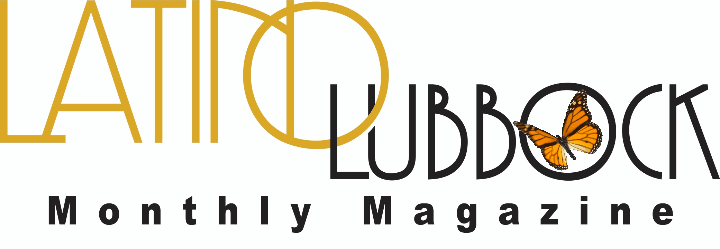Civil Rights Organizations Applaud Timely Release by Acting Census Director
Identifying Jurisdictions that Must Provide Language Assistance under Section 203 of Voting Rights Act

WASHINGTON, D.C. – On December 8, 2021, the Acting Director of the U.S. Census Bureau issued a notice of determination identifying the jurisdictions subject to the language assistance provisions of Section 203 of the Voting Rights Act, which are available at 86 Federal Register 69611. The new Section 203 determinations, which are described in detail in the Voting Rights Act Coverage Update, replace the previous Section 203 determinations made in December 2016. Key features of the new determinations include the following:
The number of states covered in whole or in part by Section 203 has increased from 29 states to 30;
All but one of the states previously covered in part continue to be covered, with Iowa dropping out from coverage;
Two states not covered in 2016 were added, Minnesota and Ohio;
Los Angeles County, California continues to be the locale required to provide assistance in the most languages (six languages), which has not changed from 2016 — Spanish, Cambodian, Chinese, Filipino, Korean, and Vietnamese.
A number of states and political subdivisions identified in the Census determinations provide assistance in four covered language groups:
Spanish language assistance must be provided statewide in California, Florida, and Texas and in a total of 232 political subdivisions in 26 states — an increase from the 214 political subdivisions covered in 26 states under the 2016 determinations;
Alaska Native language assistance must be provided in 12 political subdivisions of Alaska, which is a decrease of three political subdivisions from 2016;
American Indian language assistance must be provided in 94 political subdivisions in twelve states, up from the 35 political subdivisions of nine states covered in the 2016 determinations;
Asian language assistance must be provided in 32 political subdivisions in 14 states, up from the 27 political subdivisions of 12 states covered in the 2016 determinations.
When a jurisdiction is covered by Section 203, generally all voting materials it provides in English should be translated in the language of all groups or sub-groups covered by the determination. Voting materials include voter registration materials, voting information provided by mail, publicity about the language assistance, ballots, and oral assistance at polling locations. The language assistance provisions apply to all stages of the electoral process for “any type of election, whether it is a primary, general, or special election.” “Section 203 of the Voting Rights Act was designed to advance a simple principle — it is in the interest of democracy to do whatever possible to make it easier for eligible people to vote. This statute does that by helping millions of citizens with limited-English proficiency overcome language barriers in the political participation process,” said Damon Hewitt, President and Executive Director with the Lawyers’ Committee for Civil Rights Under Law. “Equal access under the law always has and will always be a top priority. Language assistance programs play a vital role in providing linguistic resources for language minority voters and supporting equitable access to the political process.” “We are ready to assist voters and elections officials as Section 203 requirements are implemented across the country — in new and previously covered jurisdictions — in the upcoming elections, said Terry Ao Minnis, Senior Director of Census and Voting Programs, Asian Americans Advancing Justice | AAJC. “The Voting Rights Act, inclusive of Section 203, provides legally enforceable rights to limited English proficient voters. We are also eager to work with local jurisdictions to find innovative ways to improve bilingual voter access.” “From the Northwest, to the Plains States, to the Midwest, to the Mid-Atlantic, to New England, the Latino population continues to grow and increase the diversity of our nation’s electorate. The increase in the number of political divisions required to provide Spanish-language assistance in elections demonstrates the need to ensure that language is never a barrier to the right to vote for millions of Latinos,” said Arturo Vargas, NALEO Educational Fund Chief Executive Officer. “While these coverage determinations will help ensure that elections are accessible to more of the nation’s Latino electorate, we remain deeply concerned by growing evidence of an undercount of Latinos in Census 2020, which could affect the quality of data in the American Community Survey that the Census Bureau will use to make future Section 203 determinations. We urge the Bureau to carefully examine options to ameliorate the impact of such an undercount on future determinations and other data to ensure that the civil rights of Latinos are fully protected.” “The Section 203 language requirements are absolutely essential for many Alaska Native and American Indian communities that include Native language speakers. It is difficult, if not impossible, for Native American voters to participate in elections that do not include materials in their languages," said Matthew Campbell, Staff Attorney at Native American Rights Fund (NARF). Not providing adequate language accommodations hurts us as a nation by weakening the strength of our democratic processes and stifling Native voices. Therefore, we are pleased to see the increased coverage for Native languages, and NARF stands by to assist Native voters and jurisdictions meet the Section 203 requirements.”
###
Posted courtesy of Latino Lubbock Magazine Digital Media Read the December Issue of Latino Lubbock Magazine online at https://www.latinolubbock.net/magazine-preview Please visit www.latinolubbock.net for a centralized list of COVID-19 resources. For advertising call (806)792-1212












Comments